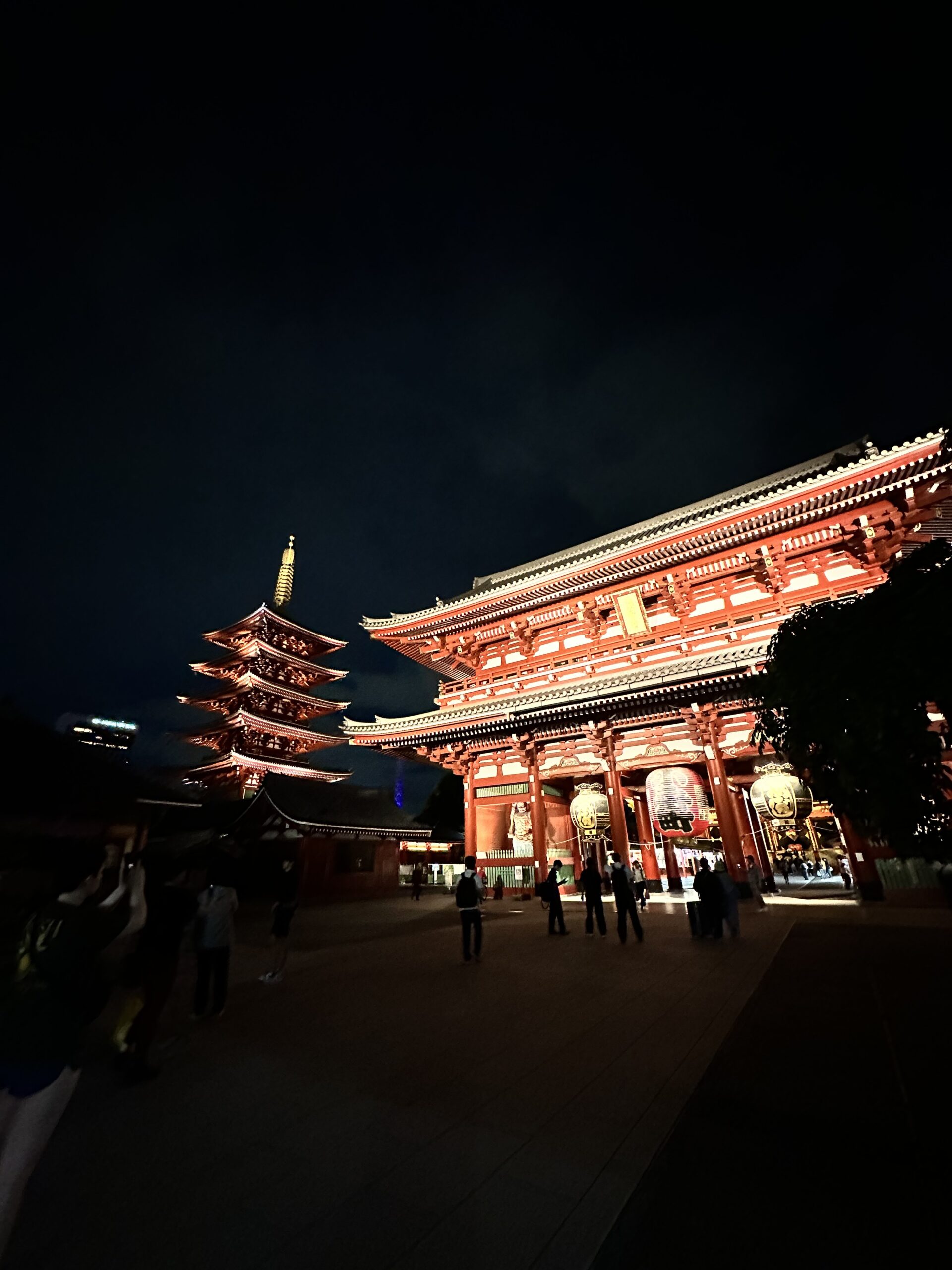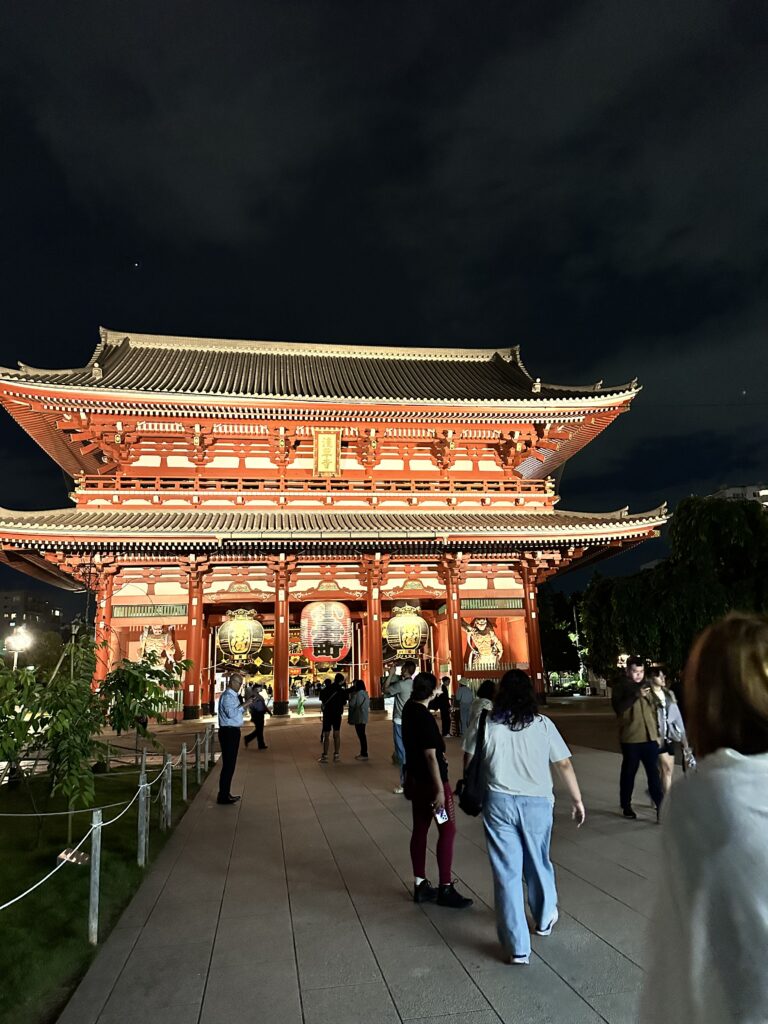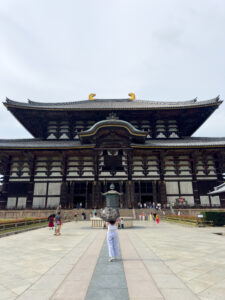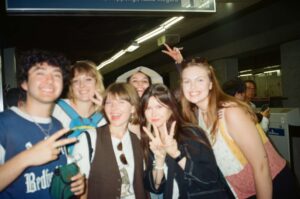
On our first night in Tokyo, jet-lagged and merely looking for a bite to eat after a long travel day, the group I was with stumbled upon the first Buddhist temple I’d ever seen in my life. We found out later it’s one of the most iconic temples in the country after watching a video on TikTok at the hotel.
Tucked a couple of streets from Japan staples like Don Quijote and a big shopping area in juxtaposition with the urban landscape of Asakusa lies the sacred Buddhist temple, Sensō-ji. Upon entering the shopping district, the LED and neon lights shift and fade to a warm ambiance of lights especially at night upon arriving to Japan’s oldest established temple.
This shift starts as soon as one hits the long straight street called Nakamise-dori, leading up to the temple’s main entrance gate, Kaminarimon (Thunder Gate), where the street is filled with vendors selling traditional items.
Approaching closer, the iconic red lantern of this temple starts to illuminate brighter and brighter. Red is used to ward off evil spirits with the light as a symbol of enlightenment of Buddhist teachings. The air begins to smell of incense burning, and smoke can be seen rising into the air past the temple gates.

The massive size of this temple and solely arriving at the gate from this street one can feel the deep-rooted spiritual tradition and appreciation for the craftsmanship of the temple. Like a lot of Buddhist temples, there are two deities on both sides of the red lantern that are there for protection in the sacred place and can be most easily compared to gargoyles in chapels — serving as protection.
After entering, there’s a beautiful setting of individuals praying and paying their respects, or merely admiring this sacred place.
The building of this temple was built to honor the Buddhist goddess of mercy and compassion, Kannon, after two fishermen found a statue of her in the neighboring Sumida River. This led tothe founding of the temple in 628 AD.
The architecture and design of the roofs and pillars are very eye-catching with its curved and ornate roofs.
A five-story pagoda, known as, “gojūnotō,” stands adjacent to the temple and its gates. It is decorated with black and gold ridges. There is a religious significance to the stories of this building. All five tiers represent a certain element in Buddhist cosmology: earth (chi), water (sui), fire (ka), wind (fū) and sky (kū). These five stories are meant to represent not only the symbols but how interconnected these natural elements are with each other and how that can apply to life.
Anyone visiting this temple can take something away from it, regardless of being Buddhist or not. As an individual who had never been in another place of worship of a different religion, I was in mere awe of the tradition and filled with curiosity in wanting to learn more about Buddhism and the tradition of this temple and others in Japan.
As cliché as it sounds in seeing this temple, it felt like something out of a movie, just with the stature of how big the temple itself was. Something that really struck me is how intact part of the original temple is. It’s important to note not all of the temple is original as much of it was destroyed during bombing raids during World War II. It’s still impressive that there are original pieces of this temple in the modern day.
Sensō-ji is truly a place where religion, culture, traditions and history intertwine, and anyone who is interested in going would find it memorable. There’s something everyone can get out of visiting this iconic landmark.







